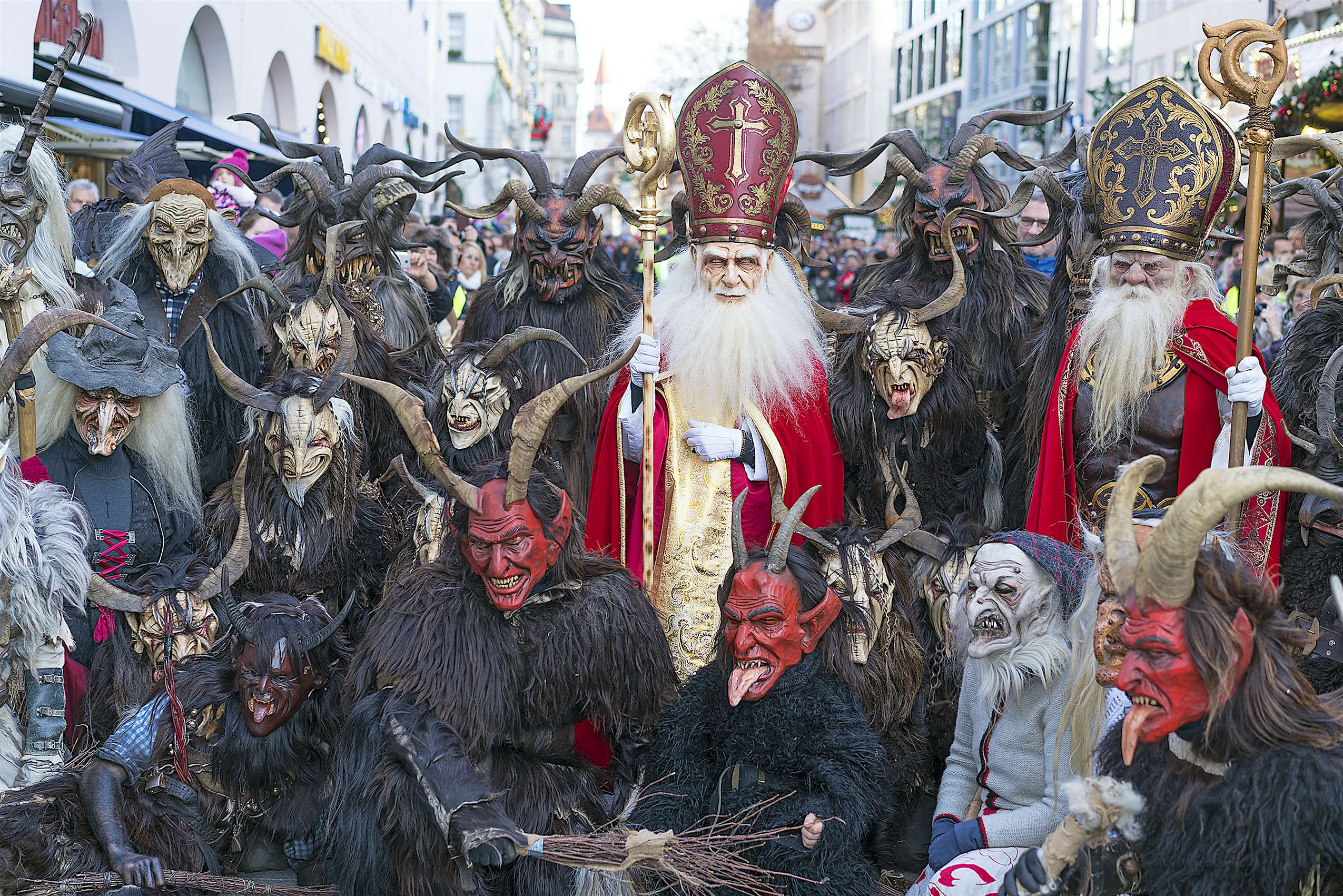
Christmas is a time for joy, giving, and celebration, but have you ever wondered about the darker origins of the holiday? While many people associate Christmas with Santa Claus, reindeer, and presents, there's a lesser-known figure that's deeply rooted in Christmas folklore: the Christmas devil.
The Christmas devil, also known as Krampus or Belsnickel, is a horned, half-goat, half-demon creature that's said to punish naughty children during the holiday season. But where did this terrifying figure come from, and what's its connection to Christmas? In this article, we'll delve into the dark origins of the Christmas devil and explore its fascinating history.
The Origins of Krampus
Krampus, the Christmas devil, has its roots in pre-Christian Alpine traditions. In ancient times, the Alps were home to a number of pagan festivals and rituals, including the winter solstice celebration of Yule. During Yule, people would light fires, exchange gifts, and feast to mark the longest night of the year.
However, as Christianity spread throughout Europe, the early Christian church attempted to supplant these pagan traditions with Christian holidays. Christmas, which was established in the 4th century, was seen as a way to co-opt the existing Yule celebrations and bring them under Christian control.
But the old pagan traditions didn't disappear entirely. Instead, they evolved and adapted, incorporating elements of Christianity while retaining their original pagan character. Krampus, the Christmas devil, is one of these adaptations.
The Horned God
Krampus is often depicted as a horned, half-goat, half-demon creature, which is a nod to the ancient pagan horned god, Cernunnos. Cernunnos was a Celtic deity associated with the hunt, fertility, and the wilderness. He was often depicted with antlers or horns, which symbolized his connection to the natural world.
As Christianity spread, the image of Cernunnos was incorporated into the figure of Krampus, who became a symbol of the wild, untamed forces of nature. Krampus's horns and goat-like features are a direct reference to Cernunnos, and serve as a reminder of the pagan roots of the Christmas devil.
Punishing Naughty Children
So why does Krampus punish naughty children? The answer lies in the old pagan tradition of using fear and intimidation to maintain social order. In ancient times, children were often warned about the dangers of the forest and the consequences of misbehaving.
Krampus, as a symbol of the wild and untamed, became a way to scare children into behaving. According to folklore, Krampus would come to town during the Christmas season, seeking out naughty children to punish. This punishment often involved beating them with sticks or carrying them away in a sack.
The Dark Side of Christmas
Krampus is often seen as a darker, more sinister counterpart to Santa Claus. While Santa rewards good children with gifts, Krampus punishes the naughty ones. But this dichotomy isn't just a simple case of good vs. evil.
In fact, Krampus represents a deeper aspect of human nature: the fear of being punished for our misdeeds. Christmas, as a holiday, is often associated with joy and giving, but it's also a time when we're reminded of our own mortality and the consequences of our actions.
Krampus, as a symbol of this fear, serves as a reminder that Christmas isn't just a time for celebration, but also a time for reflection and self-examination.
Belsnickel: The American Christmas Devil
While Krampus is a well-known figure in European folklore, there's a lesser-known American counterpart: Belsnickel. Belsnickel is a Christmas devil figure that originated in Pennsylvania Dutch folklore.
According to tradition, Belsnickel is a horned, bearded figure who comes to town during the Christmas season, seeking out naughty children to punish. Like Krampus, Belsnickel is often depicted as a dark, sinister figure who serves as a counterpoint to the more benevolent Santa Claus.
The Evolution of Krampus
In recent years, Krampus has experienced a resurgence in popularity, thanks in part to the 2015 horror-comedy film "Krampus." The film, which tells the story of a family who's tormented by Krampus during the holiday season, helped to introduce the character to a wider audience.
But Krampus's evolution doesn't stop there. Today, Krampus is celebrated in festivals and parades around the world, often featuring elaborate costumes and performances. In some cities, Krampus is even celebrated as a symbol of anti-consumerism and a reminder of the true meaning of Christmas.

Conclusion
The Christmas devil, whether in the form of Krampus or Belsnickel, is a fascinating figure that represents a darker, more complex aspect of human nature. While Christmas is often associated with joy and giving, the Christmas devil serves as a reminder of the fear of punishment and the consequences of our actions.
As we celebrate the holiday season, it's worth taking a moment to reflect on the origins of Krampus and the other Christmas devils that lurk in the shadows of folklore. Whether you see them as a symbol of fear or a reminder of the true meaning of Christmas, one thing is clear: the Christmas devil is a figure that continues to captivate and inspire us to this day.




What is the origin of Krampus?
+Krampus has its roots in pre-Christian Alpine traditions. The figure is a nod to the ancient pagan horned god, Cernunnos.
What is the purpose of Krampus?
+Krampus is a symbol of the wild, untamed forces of nature. He is often depicted as a horned, half-goat, half-demon creature who punishes naughty children during the Christmas season.
Is Krampus a real figure?
+Krampus is a figure from folklore and mythology. While he is not a real figure in the sense that he is not a historical person, he is a real part of cultural heritage and tradition.